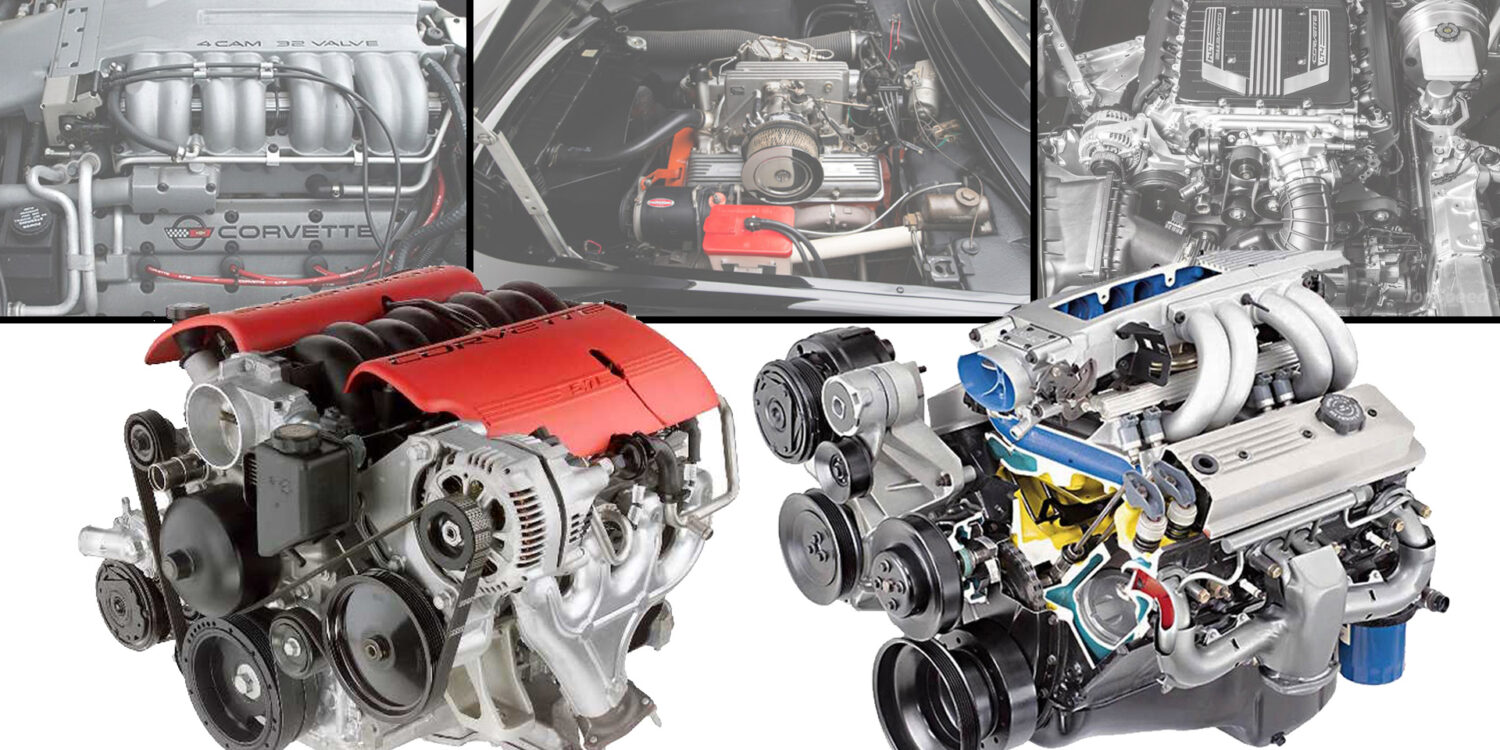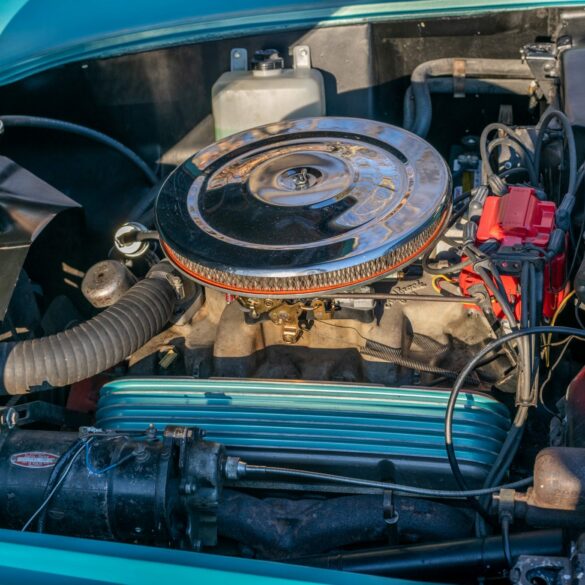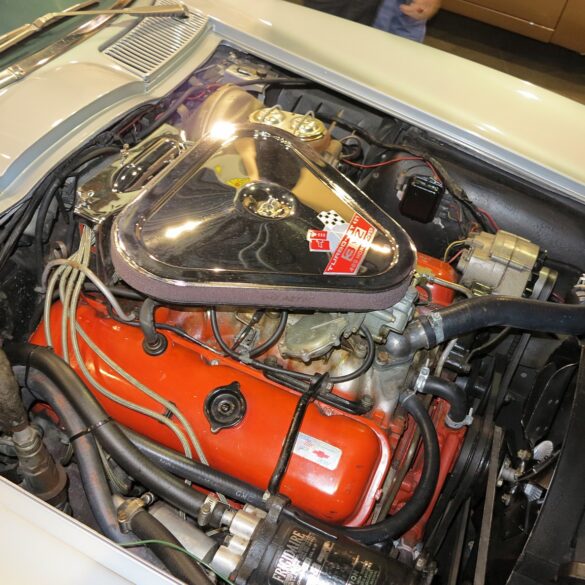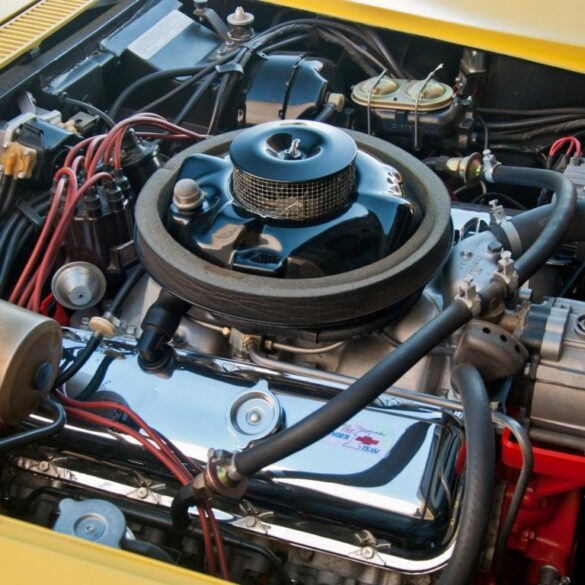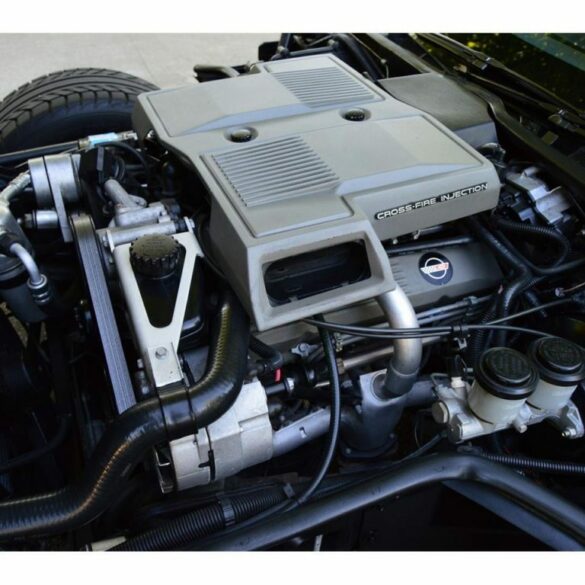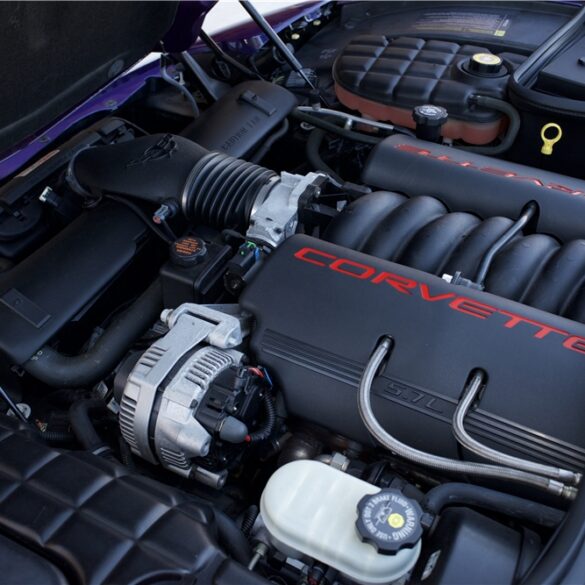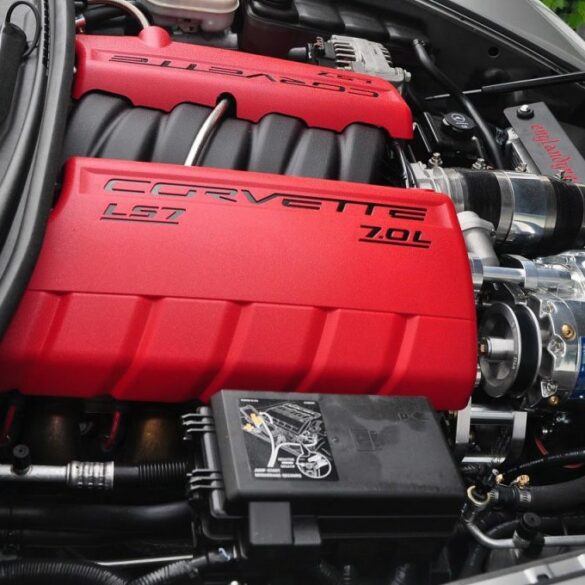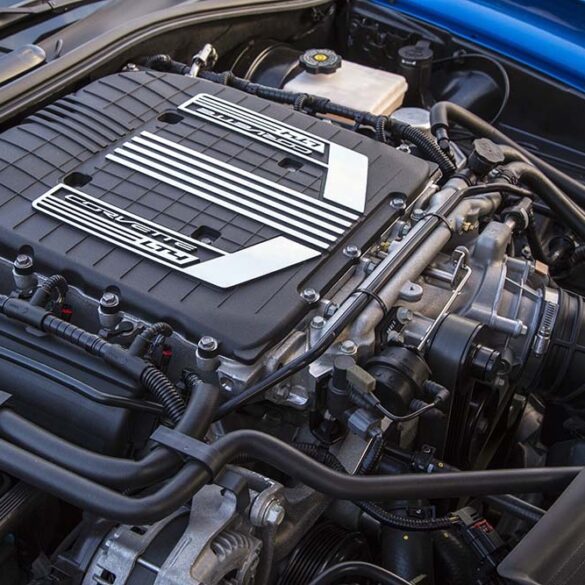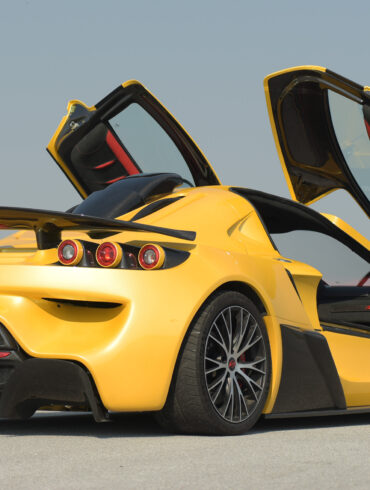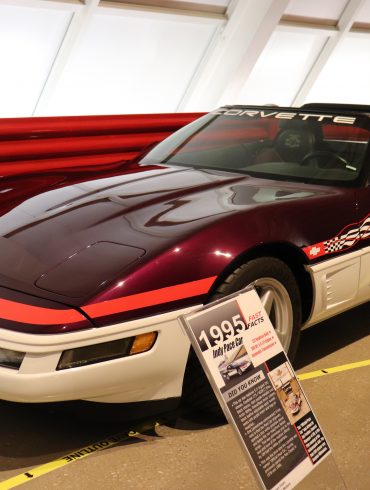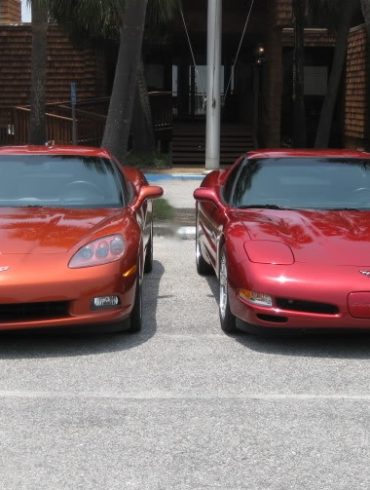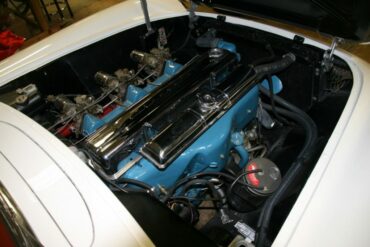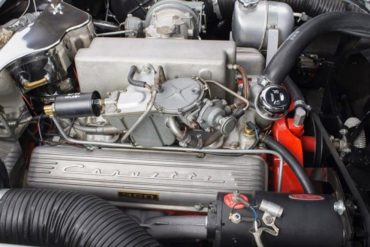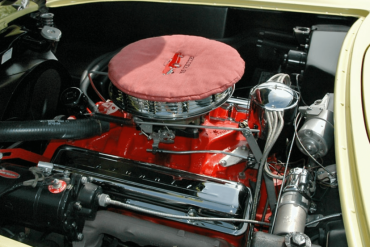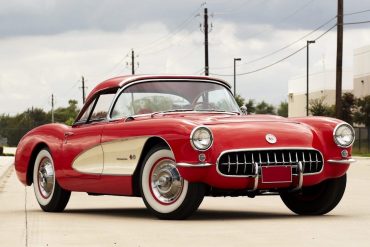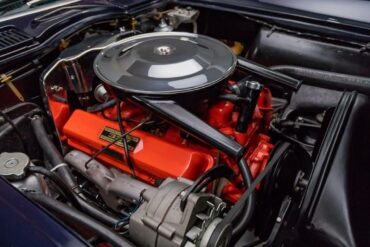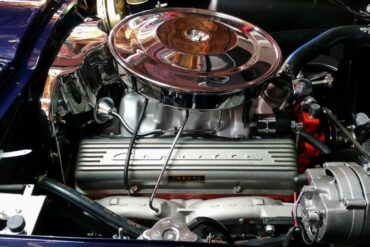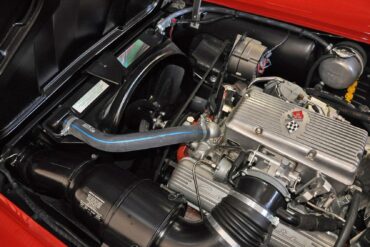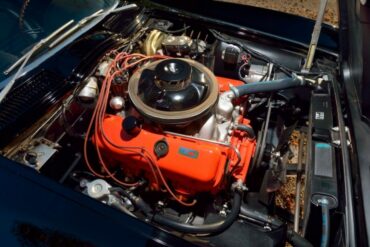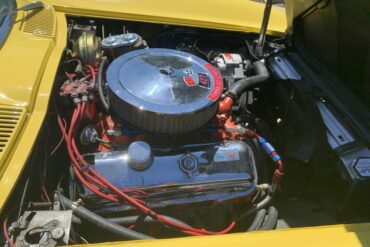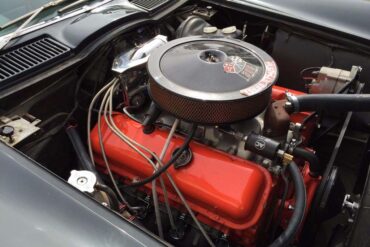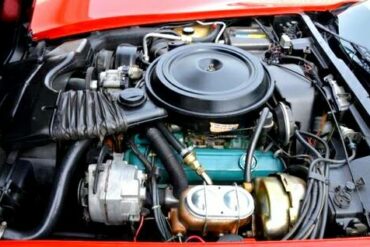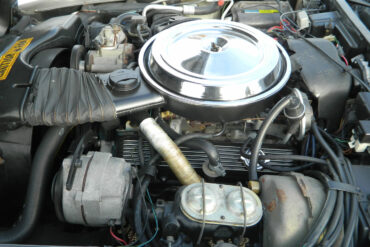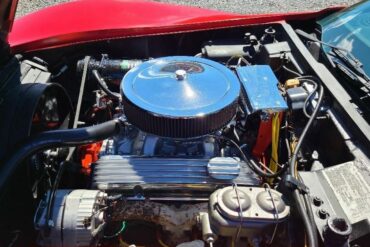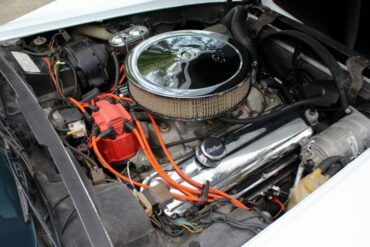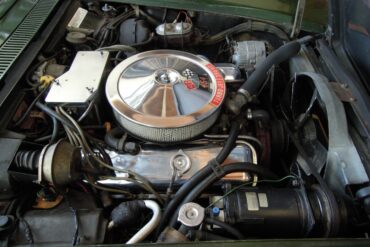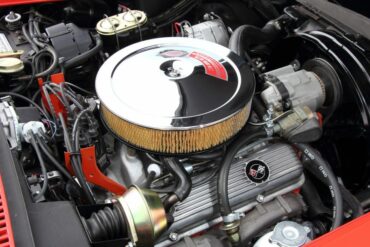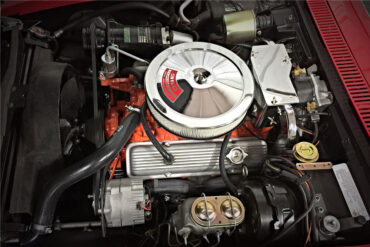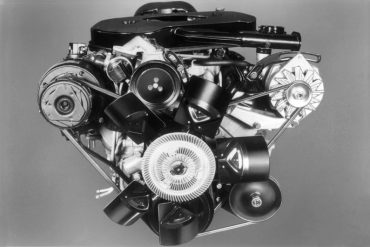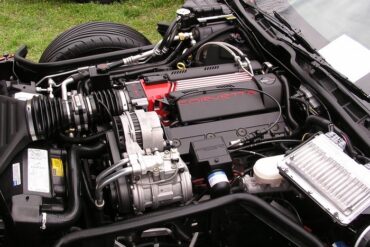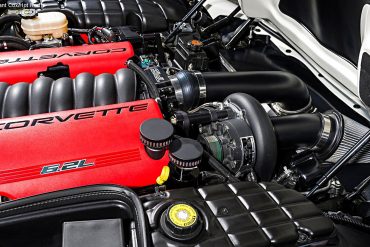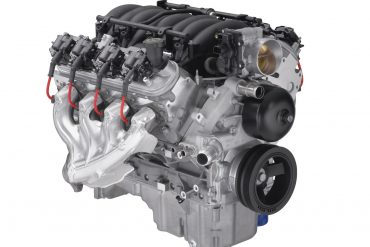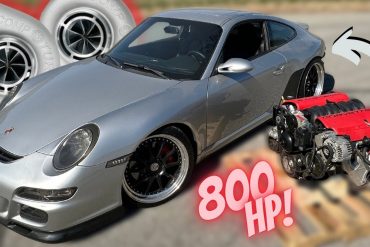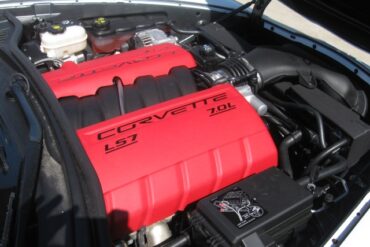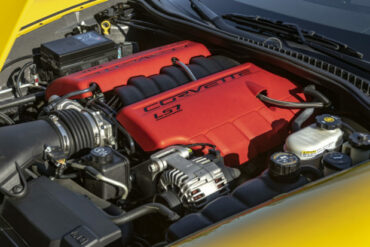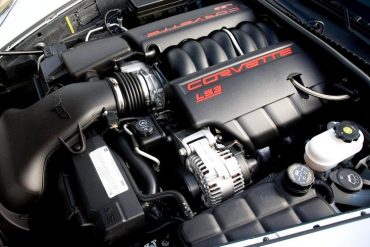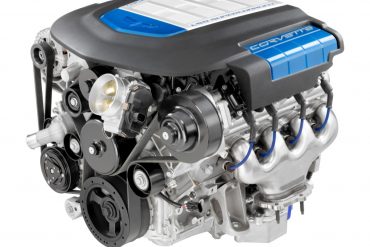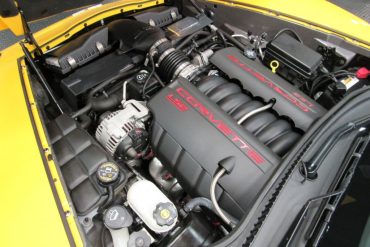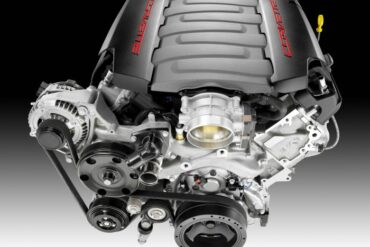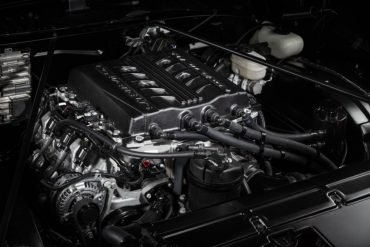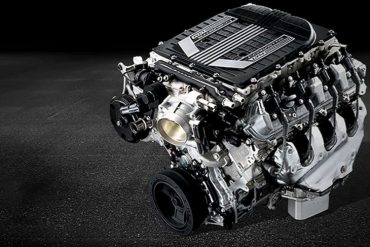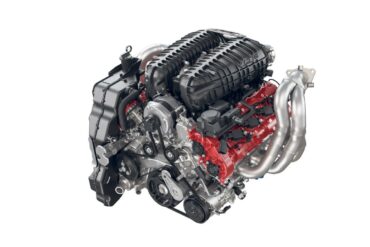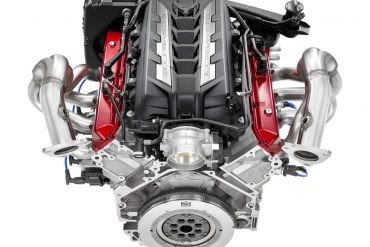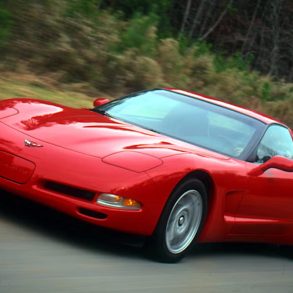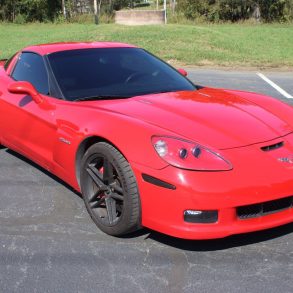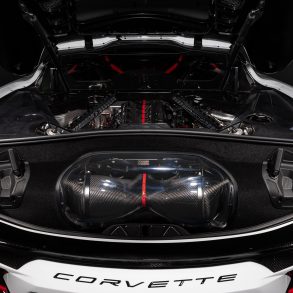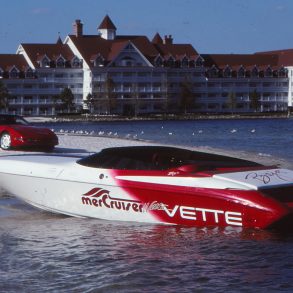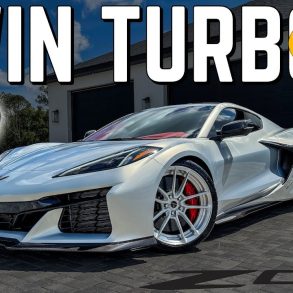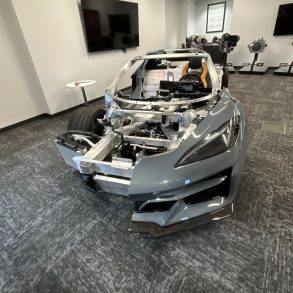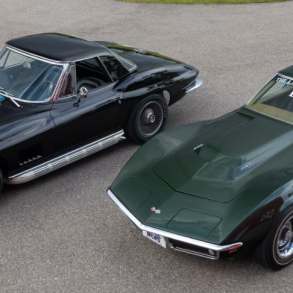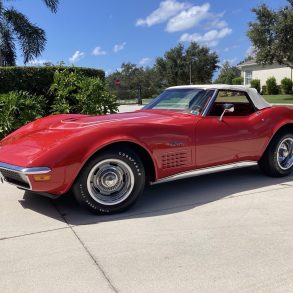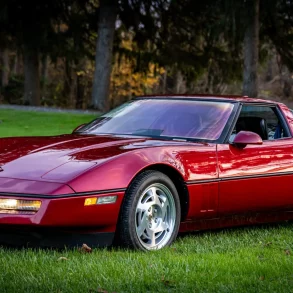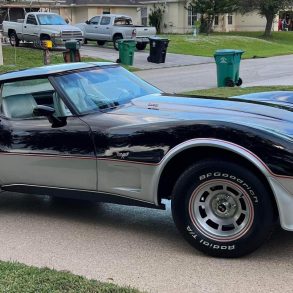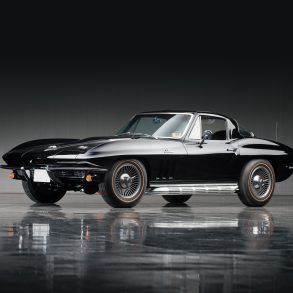The Best Engines Chevy Has Dared to Stuff Under the Hood of a Corvette Over the Decades Behind every iconic performance car, is an equally iconic engine that breathes life into every ounce of the engineering marvel in which it is housed. Not to disappoint, the Corvette has seen its fair share of noteworthy powerplant options, many of which have been nothing short of revolutionary in design. For nearly 70 years, the true American sports car has been pushing the performance […]...
Corvette Engines
Articles, Comparisons, & Guides. Sorted by Generation & Year.
Best Ever / Generation In Depth / Featured / C1 / C2 / C3 / C4 / C5 / C6 / C7 / C8 / Latest News
For nearly 70 years, the Corvette has been pushing the performance envelope, breaking barriers, and discrediting doubters, with much of the reason for this success residing under the hood. Through the passing years, the Corvette has seen several changes to its engine lineup, with a relentless trend toward continuous evolution and ongoing improvement. Since 1953 we have seen an impressive stream of engines power the Corvette and recently we have even seen a mid-engine Corvette, a flat plank engine and even a new hybrid Corvette engine. One thing we know for sure is that Chevy will continue to innovate and create even more amazing Corvette engines. This page is your ultimate Corvette engine resource.
Corvette Engines by Generation
First came the Blue Flame Six, Chevy's little economy engine that was easy modify and get more power from. When the small-block V-8 arrived it was so good that it was the most successful engine in Detroit history. The big-block Chevy engine arrived in 1965 and had many variations over the years, some like the L71 427/435, the 427 L88, the 427 ZL1 and the 430 Can-Am engines becoming legends. As magnificent as the Chevy small-block and big-block engines were, the LS-series of engines is even more so. Released in 1997 we saw many variations over the years, up to the magnificent 2019 ZR1 755-horsepower LT5. With the move to a mid-engined layout, the C8 Corvette Stingray is powered by a new version of GM's 6.2-liter "small block" V-8, dubbed LT2. The current Z06 gets an entirely new animal, the new LT6 engine, with its flat-plane crank design, it is the most technologically-advanced engine ever under the hood of a Corvette and is the most powerful naturally aspirated V-8 in a production car ever with 670 hp. And now, the Corvette V8 has finally been electrified for the first time with an e-AWD system that works in tandem with its LT2 V8 engine.
Each Corvette engine is meticulously refined to the point of near-perfection before being greenlit for production. This tradition dates back as far as the Corvette itself—taking root in pre-production efforts of 1952-1953, with the development of the "Blue Flame" inline-six. Amazingly, less than a decade later, consumers could choose to have their Corvette equipped with a 327CI fuel-injected V8.
By the 1960s the Corvette was beginning to hit its stride, especially in terms of performance. While the GM small-block reigned supreme initially, the 1960s would see the rise of the high-displacement big-block, complete with 400-plus horsepower. This was on par with the times, as the horsepower wars of the muscle car era were in full swing. This resulted in several extremely memorable power plants.
The Vette’s performance dropped significantly during the early to mid-1970s, at the hands of newly implemented federal emissions standards, yet it remained relevant. At a point in which many iconic American performance cars fell by the wayside, the Corvette soldiered on. This served as a true testament to many of the memorable Corvette powerplants that were developed during the C3 era.
The C4 Corvette debuted to a frenzy of publicity and would ultimately enjoy a lengthy run, spanning 13 years of production. During this period, GM installed a number of memorable powerplants. Many of these engines proved to be quite innovative in design, even when saddled with newly-mandated emissions equipment of the era. The following is a comprehensive guide to powerplants of the C4 era.
When the C5 Corvette was finally unveiled critics were quick to notice a thundering new powerplant. It carried the LS1 designation, serving as the C5 Corvette’s base engine for the duration of the production run. Ironically, the C5 Corvette would only ever leave the factory with one of two individual engines. This included the aforementioned 5.7L LS1, as well as the all-powerful 5.7L LS6, which powered the C5 Z06.
GM’s was on mission to engineer a Corvette that built upon the line’s performance legacy. By all indications, this is a mission that was fulfilled. The Corvette’s engine bay was host to several outstanding powerplants during the C6’s run. From the base 6.0-liter LS2 to the ZR1’s beastly 6.2-liter LS9, the C6-era was never short on performance. Corvette finally caught up to European brands.
Many consider the Corvette’s seventh generation to be when GM’s iconic car finally came of age. It was during this time that the Corvette made some of its most extensive performance gains on the road and in racing. These performance gains can be attributed to the development in engine technology during the C7’s production run. The Corvette was offered with several available powerplants, all of which were potent.
Corvette Engine Comparisons & Feature Articles
We love Chevy engines so much that sometimes we go really deep on the history, the comparisons and the iconic engines that have powered our favorite Corvettes over the decades. These are featured posts.
C1 Corvette Engines
1953 - 1962 Corvettes. Read more: C1 Corvette Research Center
Often referred to as the “The Blue-Flame”, the Stovebolt-Six’s performance characteristics were anything but “fiery”. The Corvette, in its earliest form, was often ridiculed for being underpowered. Nonetheless, the Blue-Flame Stovebolt-Six served as the Genesis of Corvette power, if only for a brief period of time.
As efforts turned toward bringing the C2 Corvette to market, GM’s engineering staff envisioned a larger, more robust addition to their already popular Turbo-Fire V8 lineup. This engine would make its debut under the hood of the 1962 Corvette, further bolstering the line’s power and performance-related attributes.
Following only two years of production, the Corvette's future appeared bleak, as talk began to circulate about discontinuing the line in its entirety. However, the well-timed advent of Chevrolet’s newest powerplant would soon rescue the Corvette from almost certain demise.
Though the 283 cubic-inch V8 seldom receives its share of attention in a world dominated by LS and LT series engines, this early Chevrolet small-block was ahead of its time. The 283ci showcased a plethora of new and innovative tech, and highlighted the engineering prowess of legendary Corvette luminary, Zora-Arkus Duntov.
C2 Corvette Engines
1963 - 1967 Corvettes. Read more: C2 Corvette Research Center
The 327CI small-block V8 was available to consumers in several distinct configurations, all of which produced varying degrees of output. Available in both carbureted and fuel injected forms, the 327CI small-block proved capable of producing anywhere from 250-360 horsepower, depending upon one’s choice of engine code.
The 265 cubic-inch small-block served as the jumping-off point for further engine development. Chevrolet spent the following decade perfecting their earlier small-block, which eventually grew in displacement and became a testbed for early fuel injection technology. Further progress was made in 1964, with the release of the L76 V8. This potent small block proved quite reliable while dishing out more than enough horsepower.
In under a decade, GM’s small-block received a substantial boost in displacement while also becoming the standard-bearer for several new internal developments in engine technology. These developments ultimately produced a new crop of small-block powerplants based on Chevrolet’s new 327 cubic-inch engine platform. Of the four 327 cubic-inch small blocks available in 1964, none topped the output of the fuel-injected L84 V8.
No list of formidable Corvette engines would be complete without including the 1967 L88. The L88 was a fire-breathing variant of GM’s 427 cubic-inch big-block lineup, which served as nothing short of a production race engine. Officially rated at 430 HP, the L88 was capable of propelling its C2 host to previously unattainable performance status. The L88 was nothing, if not a loosely veiled production race engine.
Upon its 1953 release, America’s sports car mustered only 150 HP, yet in 1966, the newly evolved Corvette nearly tripled this level of output. It was in 1966 that the Corvette was offered with not one, but two different variants of the robust 427 cubic-inch (7.0L) V8. In its most potent form (L72), the 427 officially produced 425 HP. However, most believe this value to be grossly understated.
For more than a decade after the Corvette's initial release it had small-block power. In fact, the 265 cubic-inch V8’s 1955 introduction was largely responsible for the Corvette’s validation as a sporty, performance-minded vehicle. However, by the mid-1960s, those behind the scenes at Chevrolet had begun developing a new powerplant. This engine would become the first big-block V8 to be used in Corvette production.
C3 Corvette Engines
1968 - 1982 Corvettes. Read more: C3 Corvette Research Center
GM found itself facing a critical question of sorts. Should the industry giant forgo the sale of Corvettes in California during 1980 or attempt to rectify a troubling situation. In the end, buyers in California would be able to purchase a Corvette, albeit with a variation of the same engine that was offered in Chevrolet’s passenger cars of that era, the 305 cubic-inch V8.
During many production years, consumers were provided with multiple engine options to choose from. This was especially true during the late 1960s. However, by the late 1970s, GM had begun to significantly scale back the number of production engines offered for the Corvette. This trend peaked in 1981, when only one engine, known as the L81, was offered to buyers.
Finally, in 1973, consumers were left with only three available engine options, two of which were of a small-blocks. The third was the 454 cubic-inch LS4, would only survive for two years, serving as the final big-block to grace the Corvette’s engine bay. By 1975, the Corvette was only offered with one of two engines, of which, the 350 cubic-inch L82 was the most formidable.
Was the 454 cubic-inch LS4 one of General Motors’ most powerful big-blocks? Absolutely not. However, it is historically significant nonetheless. The LS4 served as the end of the road for the big-block Corvette, as America’s sports car returned to its small-block roots. Today, many collectors seek out LS4 equipped Corvettes.
General Motors sought out any means of retaining the Corvette’s performance acuity. This desire ultimately gave rise to the company's illustrious LS5 454 cubic-inch big-block. The 454ci LS5 is remembered as one of the final GM big-block offerings to have come out in the 60’s and 70’s.
The LT-1 served as a revised version of GM’s famed 350 cubic-inch platform, and is often heralded as one of the manufacturer’s most beloved small-block powerplants. Though quite legendary in status, the LT-1 was rather obscure and short-lived during its production run, only produced for three years (1970-1972).
The 350ci V8 was actually a further extension of GM’s decade-old small-block engine series. In a bid to further cement the Corvette’s performance legacy, subsequent modifications to these earlier engines were made, thereby giving birth to one illustrious platform. It would serve as a mainstay of the Corvette line for over three decades to come.
Offered for only two years (1982, 1984), the L83 featured GM’s newly designed Cross-Fire Fuel Injection system and is often referred to by critics as being one of the most unworthy engines to ever find its way under the Corvette’s hood. However, this begs the question of whether or not the L83 was truly deserving of this mockery.
C4 Corvette Engines
1984 - 1996 Corvettes. Read more: C4 Corvette Research Center
GM ultimately decided to postpone the release of their fifth-gen Corvette, largely due to budgetary constraints. However, the development of a new powerplant for the aging C4 Corvette was greenlighted nonetheless. This engine carried the LT1 designation, and prove quite capable. The 1992 LT1 would serve as a bridge between GM small-block development.
C5 Corvette Engines
1997 - 2004 Corvettes. Read more: C5 Corvette Research Center
The LS6, which served as the motivating force behind the 2001-2004 Corvette Z06, bested the prior LS1 in virtually every facet of performance and proved formidable, both on the track and street. Perhaps more importantly, this engine provided a glimpse into the LS platform’s future, and its ability to constantly evolve.
The LS1 is the spiritual successor to the “small block V8” that GM uses in rear-wheel-drive cars, trucks, and vans. It was introduced in 1995 as the “GEN III” engine and it only shared rod bearings, lifters, and bore spacing with its predecessors (which was in production 1955 until 2003). Little did GM expect for the LS1 has become a legend.
C6 Corvette Engines
2005 - 2013 Corvettes. Read more: C6 Corvette Research Center
The Chevrolet Corvette LS3 is renowned for being one of the most...
In 2013, a revelation of sorts took place within the Corvette world. General Motors unveiled a “best of both worlds'' type offering, which paired the C6 Corvette, in its convertible form, with an indisputably fearsome powerplant. Beneath the Corvette’s hood, sat a 427 cubic-inch small-block, which carried the LS7 designation.
In the midst of the Z06’s development, engineers knew that something truly remarkable would be needed to best the base Corvette’s 400 horsepower LS2. In its production form, this new small-block V8 came to be known as the LS7. The LS7 was nothing short of all-powerful, featuring a displacement of 427 cubic inches and an output of 505 horsepower.
Upon the LS3’s release in 2007, this trend toward continual technological advancement was clearly evident. As the new power plant for the standard 2008 Corvette, the LS3 provided consumers with exactly what they had been craving, unsurpassed performance. With every reiteration, the LS small-block has become more powerful, efficient, and robust.
Most would agree that the Corvette’s no holds barred approach to performance...
Throughout the years, there have been a number of legendary powerplants to...
C7 Corvette Engines
2014 - 2019 Corvettes. Read more: C7 Corvette Research Center
It seems as if many of the engine-related advancements found in standard General Motors’ vehicles, first came to prominence when implemented in Corvette production, a decade or more prior. One such engine, which could easily be considered revolutionary, is the 2014 6.2-liter LT1. This fearsome powerplant was as sophisticated as it was powerful.
At the heart of the ZR1 Corvette resides the supercharged 6.2L LT5. GM’s engineering department was also tasked with producing the ZR1’s engine, which would have to perform at a higher level than that of the Z06’s supercharged LT4 small-block. The 755 HP supercharged LT5 would elevate the Corvette’s performance to a level never before achieved.
The LT4 engine has always been synonymous with high-performance. Introduced by General Motors in 1996, the LT4 was specifically designed as a more powerful variant to the next-generation LT1 engine previously introduced by GM in 1992. The LT4 small-block is a modern marvel, packing 600+ horsepower into a compact and affordable package.
C8 Corvette Engines
2020+ C8 Corvettes. Read more: C8 Corvette Research Center
First, this engine is the most powerful naturally aspirated, internal combustion engine (by a good margin) of any production Chevrolet small-block ever produced. Boasting a massive 670 horsepower, the LT6 trumps almost all its Corvette predecessors (save for the 2019 Corvette ZR1 engine, which boasted 755 horsepower, but needed a supercharger).
With the C8’s transition to a mid-engine format already greenlighted, GM’s engineering department got down to the business of coming up with an equally groundbreaking engine to power the Corvette’s incoming eighth iteration. The LT2, in its current state, is nothing short of immensely powerful, with 495 HP at 6450 RPM, and 470 lb-ft of torque at 5150 RPM.
Everything Else Corvette Engine
Corvette Engine News, Comparisons, & More.
It might be difficult to imagine today, but there was a period during one of General Motors’ more challenging financial eras that nearly saw the deliberate discontinuation of...
If you spend any time online, especially amongst the Corvette dedicated Facebook pages, whenever the subject of buying a sixth-generation Corvette comes up, everyone first tells you to...
The LS7 in the sixth-generation Z06 gave enthusiasts the last naturally aspirated engine for the iconic performance variant, and those seven liters of greatness helped the C6 Z06...
The design and prototyping of the Corvette C8 was perhaps the longest that Chevrolet had ever worked on a project. This would make sense as they were almost...
In the late 1980s, the world of high-performance sports cars witnessed an unexpected collaboration that would leave a lasting mark on automotive history. Chevrolet, known for its iconic...
The excitement surrounding the upcoming 2025 ZR1 never ends, and as the 7.25.2024 reveal date looms, one Texas tuner has turned up the heat with their newly released...
Recently, a member of the popular social media site Reddit posted some behind-the-scenes pictures from the eighth-generation Corvette with the headline, “In case yall have never seen a...
This is the last installment of our special series on the Mecum Kissimmee 2024 auction, where 527 Corvettes were offered, with an astounding 72% meeting the reserve and...
So many things make this 1 of 65 LT1-equipped Stingray Convertible special, and she’s making her market debut to the Corvette community on CorvSport. This rare Stingray checks...
The C4 Corvette has often been a polarizing generation in our storied 70-year history, but in reality, the C4 was a clean-slate revolutionary step forward for the Corvette...
Welcome to an extension of CorvSport’s “Time Capsule For Sale” feature, where I showcase the market on low-mileage time capsules that have survived father time and fetched top...
The Shelby 427 Cobra’s sustained dominance on the racetrack forced Chevrolet engineers to respond with a 427-cubic-inch engine for the Corvette. This involved enlarging the original 396-cid V-8....
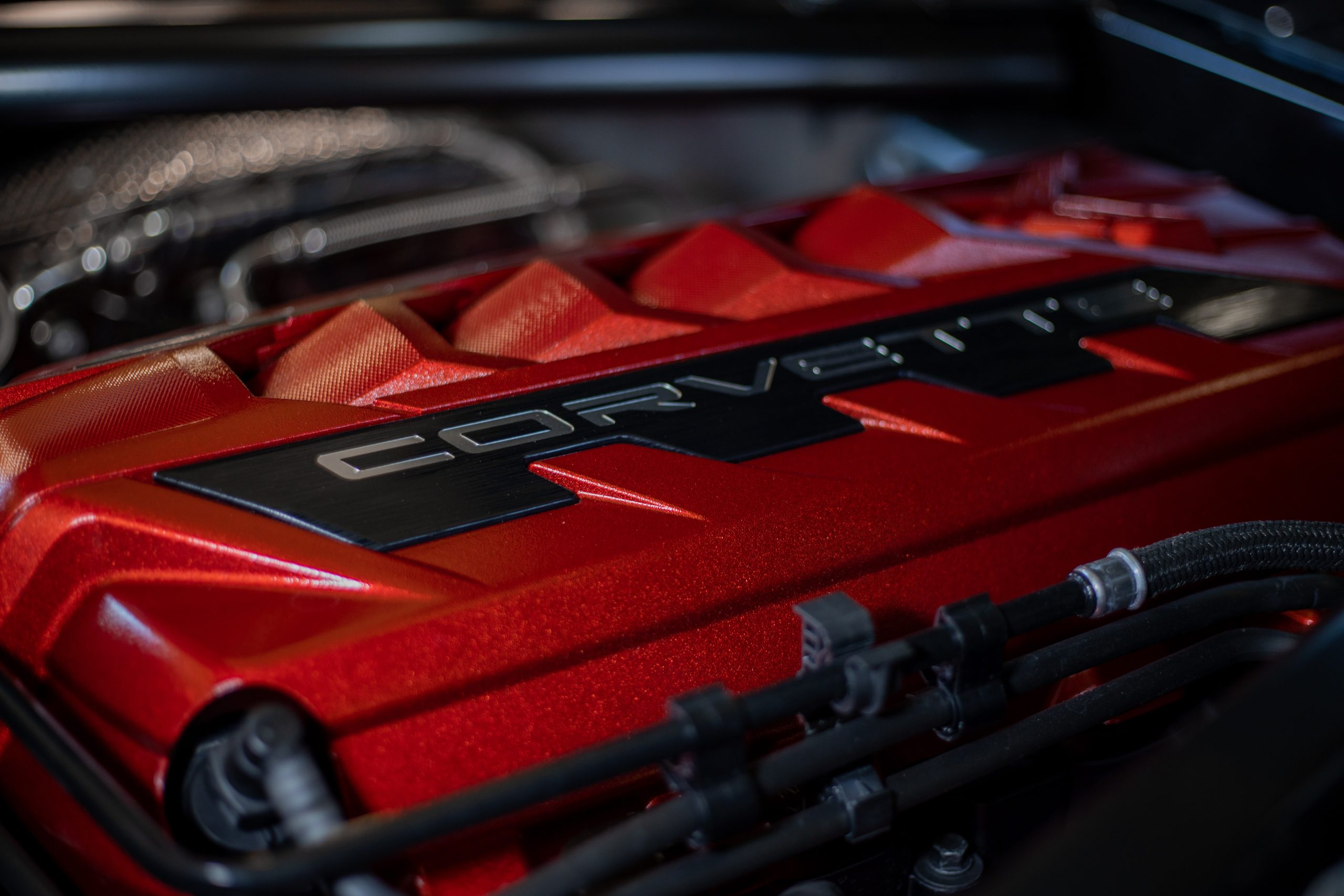
Activate Your Membership
The membership for serious Corvette enthusiasts and owners. Get access to premium content and a lightning fast experience, with no ads or annoying pop-ups. Your membership also supports the hard work and hundreds of hours our historians and writers invest in the site.


